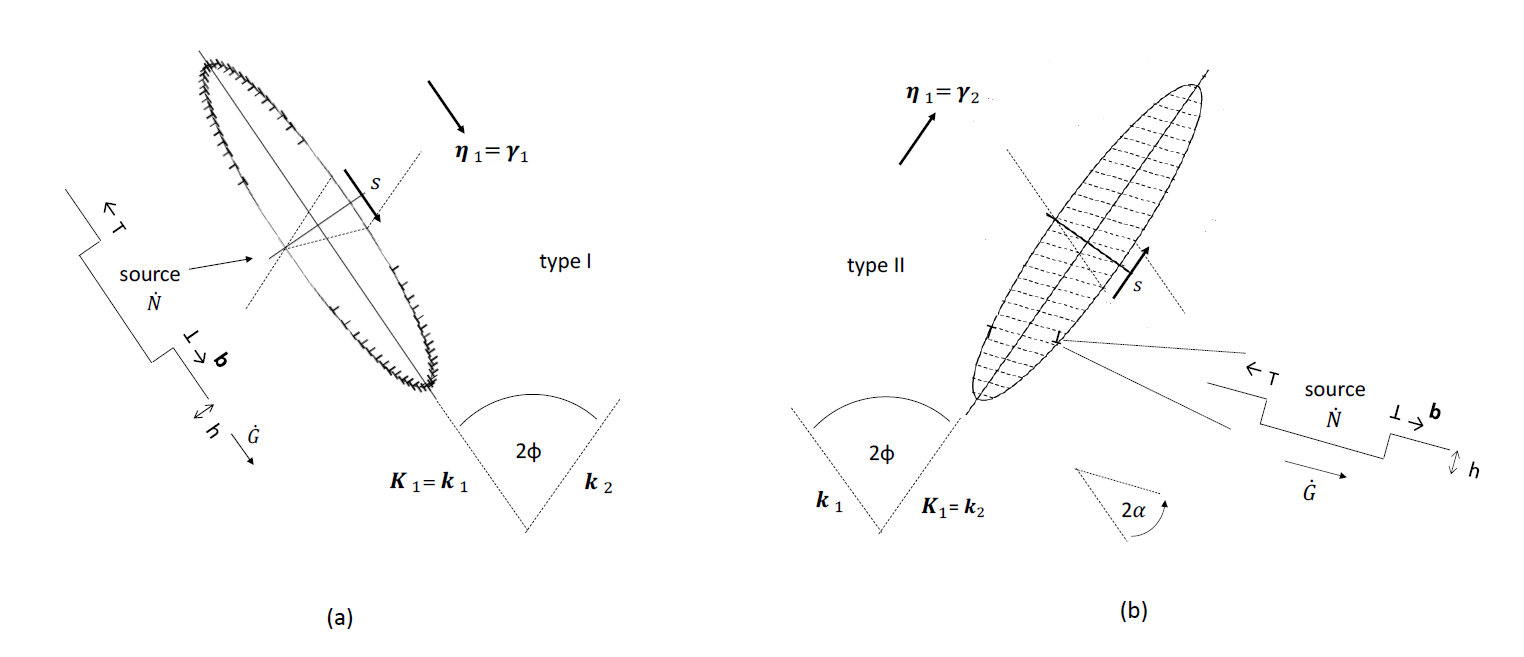When a crystal is composed of parts that are oriented with respect to one another according to some symmetry rule, the crystal is said to be twinned. For low symmetry materials such as the monoclinic martensite phase in NiTi shape memory alloys, the most commonly observed twinning operation is a type II twinning operation, in which the twinned lattices are related by a 180° rotation about a rational vector in the (macroscopic) twin plane, rather than a 180° rotation about a twin plane normal, as occurs for type I twins (reflection twins). The question then arises of how such twins are able to form mechanistically. In the conjugate type I twinning operation, the mechanism of formation is understood in terms of the generation and motion of disconnections along rational twin planes, k1. These disconnections have both dislocation and step character.
Here, it is proposed that to form type II twins, disconnection dipoles generated initially on the rational k1 = (011) twin plane of the conjugate type I twinning operation in NiTi expand on k1, accumulating to form a tilt wall perpendicular to k1. Equilibrium then occurs when the strain and rotational distortion fields of the constituent disconnection dipole defects are equally partitioned between the adjacent twinned crystals. The resultant interface between the twinned crystals is then parallel to the irrational conjugate type II twin plane, in this case k2 = (0.721 1 -1), observed experimentally. It is proposed that the formation of type II twins on k2 occurs in this manner, rather than the formation of type I twins on k1, because the disconnections have limited mobility on k1, even though they are readily nucleated on this plane. This conjecture is supported by showing that the Burgers vector of the defects in NiTi martensite has a small magnitude, implying easy nucleation, but that the motion of these defects along k1 is accompanied by complicated atomic shuffling.
Figure caption: Schematic illustration of the topological model for the formation of type I (a) and type II twins (b). The plane of shear, ns, is parallel to the page, and is irrational. Dipole sources operate on the disconnection glide plane, k1, in both cases, as indicated by the inset sketches. After relaxation, the k1 planes within the type II twin are rotated by 2α about ns from their original orientation, where a = 90° - 2φ is the shear angle common to both these type I and type II twinning operations, so that s = 2 tan α.
R C. Pond, J.P. Hirth and K. M. Knowles, "Topological model of type II deformation twinning in NiTi martensite", Philosophical Magazine 99, 1619‒1632 (2019)

